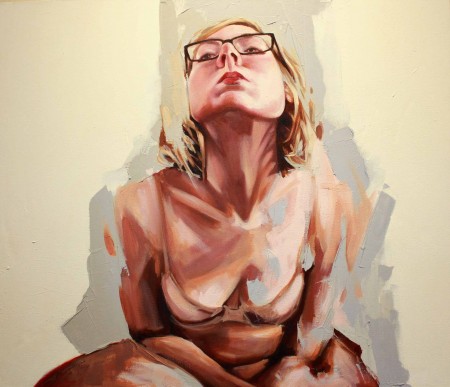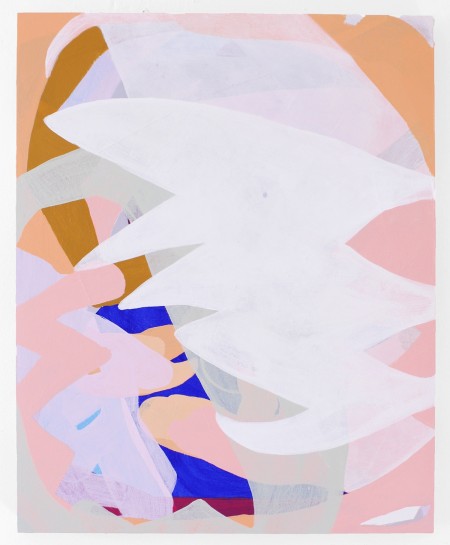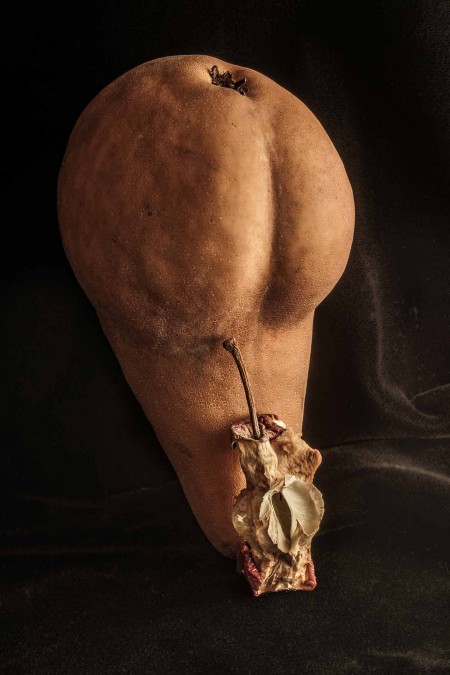Gender is one of the first assessments we make.
How does this instinctive process affect self identity and imposed identity?
What happens if the self’s and society’s assessments conflict?
Are we simply male or female?
Why do we assign gender to objects?
What is male?
What is female?
Why does it matter?
Printed on a piece of gallery ephemera, this collection of queries greets each guest of Engendering Identity: LGBTQ (and u). Serving as a sort of compass for navigation, these objectives walk you through the survey of gender as it was explored (and experienced) in the context of the show. Answering some while posing more, the artists of the exhibition take these very questions to heart, to court, and everywhere in between.
The Disparity of You
Gender is just as much about the collective as it is about self. While the altering gender landscape has taken shape across public terrain (legislation, education, religion, and more) it’s not so much about ‘feminine’-ism or ‘masculine’-ism as it is about ‘you’-ism. Placing herself at the crux of this ism is artist Nicole Trimble. Taking the practice of Life Drawing and turning it in on herself, she beckons a reflective observation of body and life and all that is underneath.

Photo courtesy of Wash Park Art.
The figure observed can be a powerful thing. We see this in the derma strokes and fleshy tones of the figure above. But what if observation breeched physicality to gander internality? What if this unseen self opposed the seeable self but the two were one in the same? This striking dichotomy finds its way in the telling title of Muddled 1. An autobiography and advent of sorts, Trimble takes us through the process of reconciliation of ideality to actuality as they pertain to self. Through realism and painter-ism, Trimble converges the disparities into a masterful yet personal portrait. This understanding of ‘you’ is quintessential to the larger conversation of gender and identity, and is a visible centerpiece for the show.
There’s No ‘I’ in Gender
The binary quandary of male vs. female has been unfurled into the flux of feeling, faith, and everything in between. Gender is not necessarily one or the other or any at all; it is elusive, equivocal, and congenial, at that. If gender, then, is a spectrum, Wild Wild Leaves runs the gamut.

Photo courtesy of Wash Park Art.
A conflux of masculine derivatives and feminine tenacity, this eliminative work says the most about what’s not there. In his human-less, figure-less piece, artist Mica Smith proposes the malleability of gender, or at least our connection to it. The boyish blue and cheeky pink plays off our Western prerogative toward exclusivity as it pertains to gender classification. The abstract forms placate the social ordinance to choose between the two. The aesthetic poignancy of the piece points us to the artist’s personal and practiced experience with the matter. The absence of a human makes us think about gender all the more.
Adam and Eve and the Pear Tree
Playfully positioned in the kitchen area of the gallery is Matthew Zory’s Still Life 2. Either kitschy or caustic, I can’t really say, this suggestive succulent invites its guest to gather round the gender table.

on Epson Exhibition fiber paper, 6”x9”.
Photo courtesy of Wash Park Art.
Since the dawn of time (if you so believe) fruit has rooted itself in the gender dilemma. From Adam and Eve’s marital power struggle of ‘he said, she said’ to Fruit of the Loom’s coy but indicative marketing, we see this strange symbolism positioned at the center of the sexes dialogue. Even more, the presence of fruit (and all its implications) in the context of this show point to how inextricably tied sexuality is to gender, and how for some, they are one and the same.
While the piece itself is very tongue-in-cheek, the formal choices in Zory’s work point the viewer to the history of art and its luscious constituents (take Caravaggio, for example). More presently, I couldn’t help but think of the coincidence of this show with the Robert Mapplethorpe commemoration happening downtown, and how this parallel broadens the conversation even further. When thinking about the gender formula, we now consider ancillary variables such as sexuality, age, and race, to name a few. Our understanding of gender becomes much more complex and less likely to be defined, the hoped heartbeat of the show.
While inclusivity is implied in the nature of the exhibition, Flannery O’Connor says it best (as she always does) in her excerpt from Mystery and Manners: Occasional Prose: “Art never responds to the wish to make it democratic; it is not for everybody; it is only for those who are willing to undergo the effort needed to understand it.” For the willing mind, visit Wash Park Art now through March 26, 2016.
–Hannah Leow